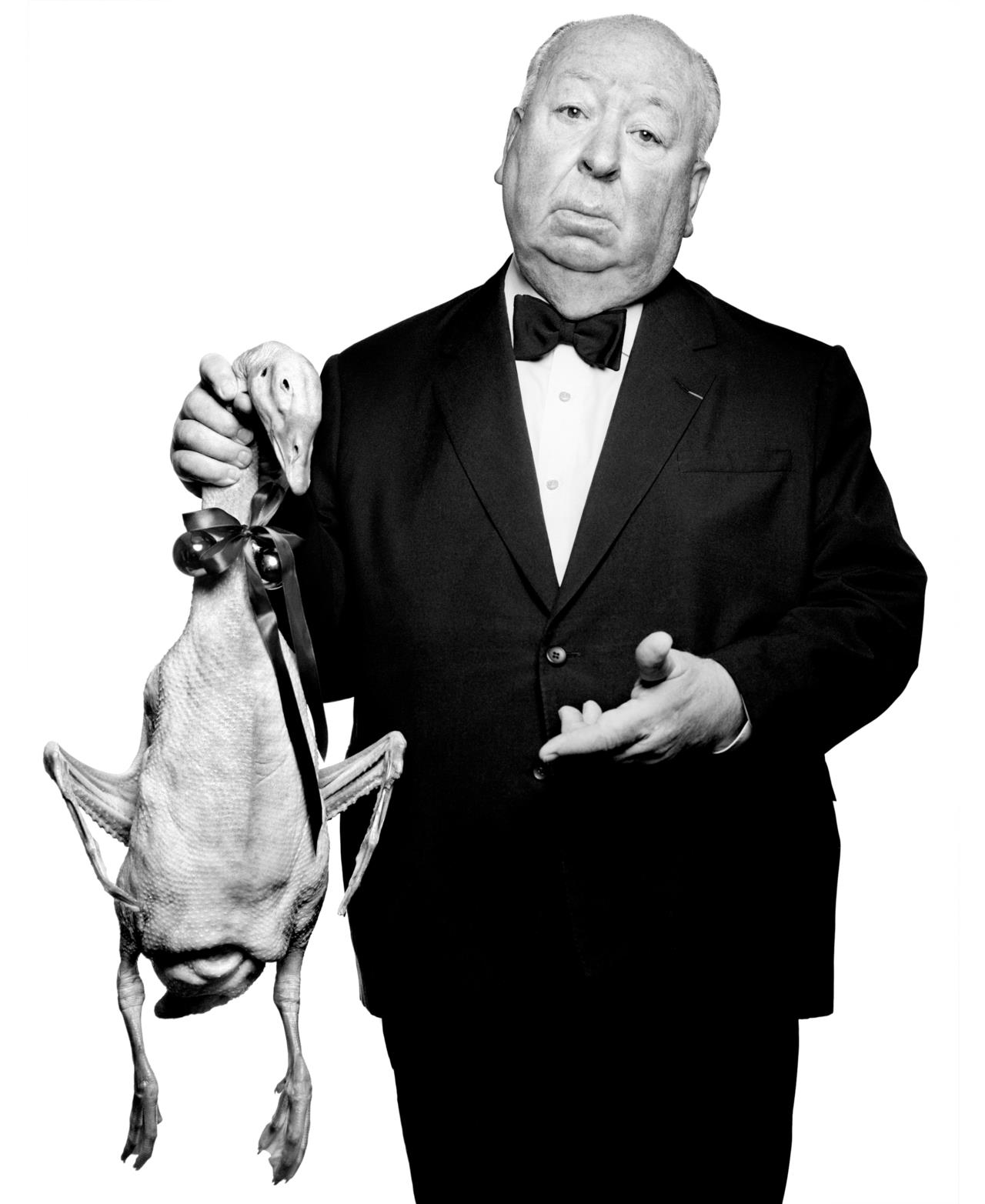Albert Watson is the master who inspires artists to reach further and aspire to be better. This image of Alfred Hitchcock taken in 1973 was a turning point in his career. In fact, Albert says, “It is the most important shot I ever did because it was a confidence builder.”
Carpe diem
When Harper’s Bazaar called and asked Albert to photograph Alfred Hitchcock he seized the opportunity. “If you get the chance to do a shot like that, then you should rise to the occasion and try and do it the best you can.” It was his first time working with somebody famous. He calmed his nerves through careful preparation to be “ready and efficient” and to be able to “concentrate on my communication with him. That was an important thing.”
To this day, Albert prepares meticulously for his shoots, as we saw when he created the iconic images of Sergei Polunin. In this case, he watched Hitchcock’s movies and used the spin of a psychological thriller as inspiration. The magazine wanted to frame the feature around Alfred Hitchcock’s recipe for a Christmas goose, showcasing his talents as a gourmet chef. The young photographer went out on a limb and suggested something audacious – Hitchcock should hold a dead goose by the neck as if he had just strangled it. His quirky take fired Hitchcock’s imagination and the adjustment made for a powerful shot.
Little is the light
Albert Watson was making his way as a photographer in the early seventies. But he had already understood the importance of light in creating texture, mood and definition. He knew that light is just part of what you do as a photographer. As with much of Albert’s work, this image of Alfred Hitchcock is simply lit. Perhaps this can be attributed to the degree of his knowledge of lighting at the time and to the availability of equipment. But we have seen over time how simple lighting and his "less is more" approach to photography have become part of his signature style. At that early stage of his career, Albert already had the instinct for effective light.
He chose a white background to contrast Hitchcock’s black suit and used an umbrella flash with one light on that background. His equipment was basic – he only had two lights. He favored making it look good with the tools he had rather than using tricky techniques. He found a clean light that shaped the image.
Inspiration and perspective
Albert rose to the occasion. He took his nervous anticipation and channeled it to find inspiration and daring. To him, inspiration is an important element in everything he does because it stimulates and forces the individual to generate diverse ideas and to view things differently. Whether it be art, music, cinema, or other people’s work, “Inspiration is a little bit like wind in your sails. It helps you move forward, and it can give you a different perspective.”
Rookie to genius
Albert has journeyed far from the early days, when he took any work he could get, to his status as a highly sought-after artist. He no longer tries to “eliminate unexpected things happening” but morphs the unexpected into genius.
He has learned much along the way and is generous in sharing his knowledge:
- Connect with people – being personable is a photographer’s best weapon and can make a good shot a great shot.
- Keep the light simple – take a journey with the light. Start simple, then manipulate it to shape the image.
- Always be on the lookout for inspiration and ideas.
- Prepare well and do your research.
- Conceptualize your shot, i.e., make your idea visual.
- And practice. This one is not a secret. To do something well you have to practice. A lot.
